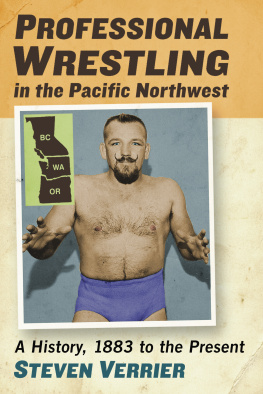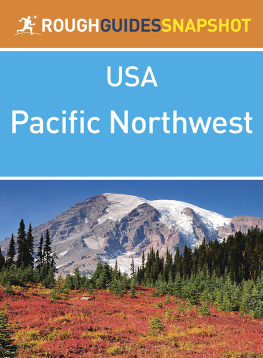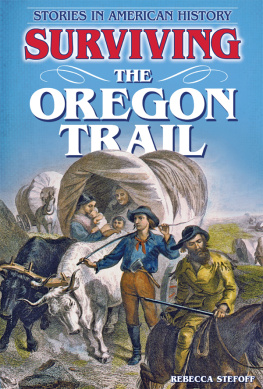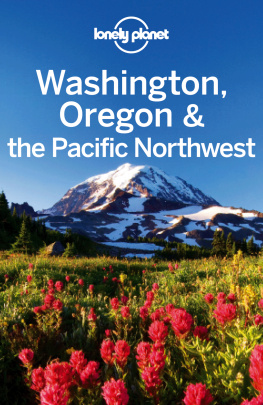Jan MacKell Collins has been a published author, speaker, and presenter since 2003. Her focus has always been on Western history, with an emphasis on historical prostitution. Collins has published numerous articles on her subjects in such magazines as True West, Montana Magazine, All About History, and numerous regional periodicals. In 2016, she appeared on Adam Ruins Everything as an expert in prostitution history. Collins currently resides in Oregon, where she continues researching the history of prostitution.

A pleasant plethora of people have assisted me in piecing together this history of prostitution in the Pacific Northwest. My hat is, and always will be, off to Professor Jay Moynahan. Jays delightful series of books about the subject, as well as his tireless research, advice, and resources, have been of great help to me for many years now. His work has revealed an incredible amount of information across the West, including from his home state of Washington, but also Oregon and Alaska. Also for Alaska, I am indebted to Lori Sewald and Mark Gregory of Victor, Colorado; also to my dad, Wally Smith, and my stepmom, Barbara, for their visits to madam Dolly Arthurs house in Ketchikan, Alaska, and for sharing what they learned with me.
Lucky for me, Oregons prostitution history remains virtually intact in many ways. But I could not have followed my map of research without the assistance of Joanie Bedwell, her daughter Linda, and Phyllis Pearce of the Hazel M. Lewis Memorial Library in Powers for lending clues for me to follow regarding the shady ladies of Coos County. Lacey Pearce and Wade Hurlock, my ever-cheerful neighbors, have offered much in the way of support and their willingness to listen to my many stories (special thanks goes to Wade, who coined the term Whoregon). Powers Tavern owner Jill Moore, community volunteer Tish Moore, and Powers resident Deb Woosley also have been kind enough to share what they know about the area. In Coquille, Cathy Vitale of the Coquille Valley Museum was very helpful. Also, a big thank you goes to Burt Dunn, who provided some great information about Sugar, the once reigning madam in Coquille.
In Washington, I must thank La Jean Greeson, whom I first met back when I was director of the Cripple Creek District Museum in Colorado. La Jean was researching her family there and has since become a dynamo of information and a research goddess besides. La Jeans encouragement, assistance, and introduction of madam Lou Graham to me have been a most pleasant and ongoing journey as we continue discovering historical facts together. Also I must thank Edward Nolon of the Washington Historical Society for providing information about the town of Columbia River. Mr. Nolon was kind enough to assist me in finding the scant information about this little ferry town.
In closing, I wish to sincerely thank my editors, Erin Turner and Alex Bordelon, for their patience and for assisting me every step of the way in this and my other books. Thank you also to Courtney Hoffman, Nancy Degnan, and countless others for their business opportunities, encouragement, friendship, and support. There are a lot of wonderful people out there who follow me on social media and support everything I do. Thank you to each of you. Special thanks go to my poor husband, Corey, who watched me disappear into my office each day and largely picked up the chores of running a busy household while I wrote this, the fourth in a new series of books about historical prostitution. He also did his best to hold down the circus, that is, our two rambunctious cats and one elderly dog, and almost always managed to keep things around our tiny house quiet as I worked. That in itself is an undertaking even when we arent doing anything but enjoying life in the majestic and beautiful Pacific Northwest.

F rom the Anglo point of view, Washington State has a long and varied history, beginning with the arrival of Juan Perez in 1774. Subsequent explorers found a range of climates, from coastal lands to rain forests, from flat terrain to towering mountains. Like the rest of the Pacific Northwest, Washington is subject to four seasons, with snowy winters, cool and moist springs, warm summers, and autumns fairly bursting with color. Long before the arrival of Europeans, however, Native Americans had resided in the future state. When Meriwether Lewis and William Clark arrived in the area in 1805, they found the indigenous people to be quite different from most other tribes they had seen in their travels. Notably, women in these groups appeared more equal in status to their male counterparts. Lewis theorized that the women gained their equality due to more evenly distributed economic roles.
Lewis and Clark also could not help noticing that the Native Americans held a very different outlook on their societal roles when compared with that of Europeans. Anglos regarded prostitution as being promiscuous, while Natives regarded the cultural tradition of selling, lending, and trading women to others for sex quite natural. To them, there was nothing wrong with using women for the entertainment of guests or as trade for goods. There was no shame in doing so, since it generated good faith in business and personal relationships with Anglo explorers and traders. Most unfortunately, by the time Lewis and Clark made their debut in the region, a good number of young girls had contracted syphilis from the French and British traders who had preceded the expedition of 1805. In the following years, the European view of prostitution as a dirty profession became common among all peoples in the United Statesprimarily because of the sexually transmitted diseases brought by the Europeans themselves.
During the 1830s, scant handfuls of Anglo women began arriving in Washington. In the meantime, traders and other pioneers made do by taking Native American wives. When the logging industry became big business in Washington Territory beginning in the 1850s, loggers were imported from as far away as Maine to work in the resulting camps and mills. Few of them, however, brought women with them. By 1858, Charles Prosch of the Puget Sound Herald at Steilacoom was writing about the lack of available white women for marriage. A year later, Prosch reported that the fifty bachelors of the village were eager to put their necks in the matrimonial noose, but the ratio of men to women along Puget Sound was guessed to be nine to one. Those women who were present were already married, largely due to the 1850 Land Donation Act, which promised 320 acres of land to each man but also an additional 320 acres to married women. Socially speaking, however, at least some of the married women were as young as thirteen years old.
In 1860 Prosch furthered his cause with an editorial titled The Scarcity of White Women. He claimed that at least two thirds of the three thousand voters in the territory wanted to get married, right then, but lacked suitable women to marrythere being largely only half breeds who would be carrying in their veins the blood of men now historic. The subject was well received, to the effect that in February, Steilacoom bachelors gathered to further discuss the matter. There being no immediate sign of Anglo women back East crossing the raw plains and unforgiving Rocky Mountains to their locale, the men began to devise ways and means to secure this much-needed and desirable immigration to our shore. Some of the plans were a limited success, while others failed. One thing was sure: East of Washington were a bevy of soiled doves who seemed to magically sniff out the opportunities in the Pacific Northwest, packed their trunks, and slowly but surely headed toward what would become the Evergreen State.










